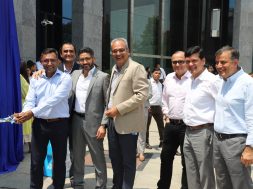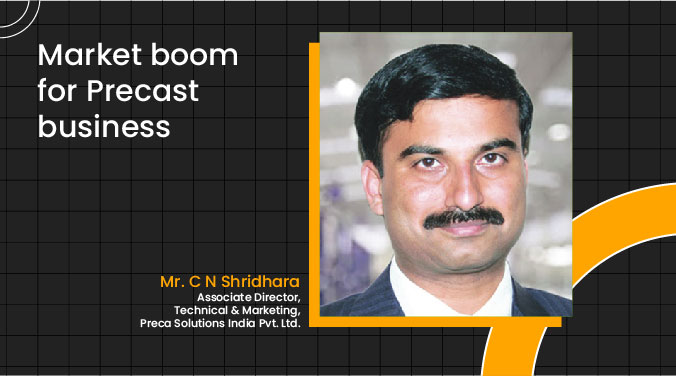“We intend to position HIL as a leading building products company, offering a comprehensive and diverse range of products with a strong emphasis on innovation and sustainability” says Madhusudan Mokashi, Vice President-Marketing, HIL Ltd.
HIL has been a trusted name when it comes to building materials industry with a number of brands which offer complete solutions for all types of building purposes. In an interview with ACE Update, Madhusudan Mokashi speaks how the building materials industry is set to transform.
What is the current status of the building materials market? With the new government having taken over at the centre, the industry is looking forward to consistent high growth and success. Building products have recorded a growth of 34 per cent over the corresponding quarter of FY14; other businesses have grown by 10 per cent over the corresponding quarter of FY14. We hope to grow at a similar pace. It is difficult to predict a figure as of now. The industry is doing well and has made a comeback with the new business, reforms acting as a catalyst of growth. The overall industry growth rate is expected to pick up and the overall scenario looks bright and conducive to business growth.
How does the market cope with competition from low-cost regions? One of the most frequent objections sales people in any industry hear is, “The price is too high for the market,” However, most consumers do not make purchasing decisions based on price alone. We need to show customers how our product or service has an edge and thus convince them to pay a reasonably higher price. Market segmentation within the ‘low cost’ zone and targeting them with the ‘value add’ is the key to success. Thereafter, the product promotes itself and starts creating a market, thus breaking the traditional myth that ‘high cost’ products do not find a place.
What are the growth drivers for growth of the building materials market? How would the architectural products segment drive growth? Central or state government policies pertaining to infrastructure development, demand-supply gap for residential housing, favourable demographics, rising affordability levels, availability of financing options as well as fiscal benefits available on availing of loans are the key drivers, supporting the growth of construction and therefore the demand for building materials.
Architectural products generate an economic value by virtue of clever design. Just like the work of an architect adds value to a building; architectural products create a similar value. Architectural products moderate the way a place is perceived by people and thereby builds the image of the business and is one of the main sources of customer attraction. Architectural products also add value to the construction and aids as the ‘key differentiator’ among similar constructions.
What are the major challenges affecting the market? Currently, there are two major challenges faced by the market. The first would be the conservative mindset. Generally, in the construction industry people like to adhere to products and processes they are comfortable with. They are wary of change and using newly launched products.
Secondly, in the current age of information overload, a lot of information is being circulated without adequate verification. The authenticity of any information or notion needs to be reviewed and substantiated by facts. Unverified information can create havoc and colour public perception, leading to false conclusions. One such example is from the sheeting industry where there is an incorrect perception that the government has banned production of asbestos roofing because it is carcinogenic. This is not true, and yet this perception continues to be the largest hurdle that the industry is battling today.
Where should you position your company in the current market scenario?We intend to position HIL as a leading building products company, offering a comprehensive and diverse range of products with a strong emphasis on innovation and sustainability. Our strong focus on green products and our stand as a pioneer in having anticipated and adapting to the paradigm shift to green products is a sure edge and a clear differentiator. Just like the work of an architect adds value to a building; architectural products create a similar value.
Cookie Consent
We use cookies to personalize your experience. By continuing to visit this website you agree to our Terms & Conditions, Privacy Policy and Cookie Policy.









